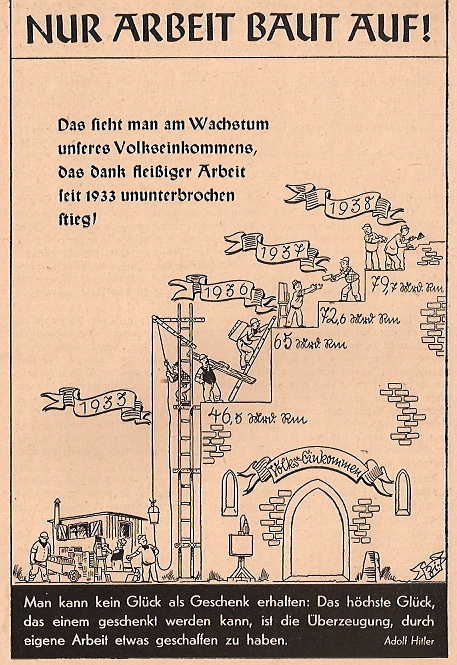Background: These images come from Die wirtschaftspolitische Parole, the official bimonthly Nazi Party periodical on economic matters. Here I provide some visuals I found interesting in issues between 1938 and 1940. They shows Nazi efforts to claim economic success.
This periodical began in 1936, and was first titled Mitteilungen der Kommission für Wirtschaftspolitik der NSDAP, changing to Die wirtschaftspolitische Parole in 1938.
Nazi Economic Propaganda
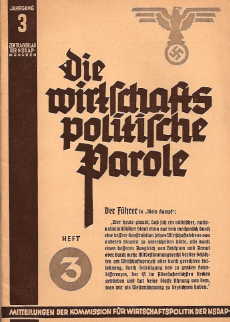
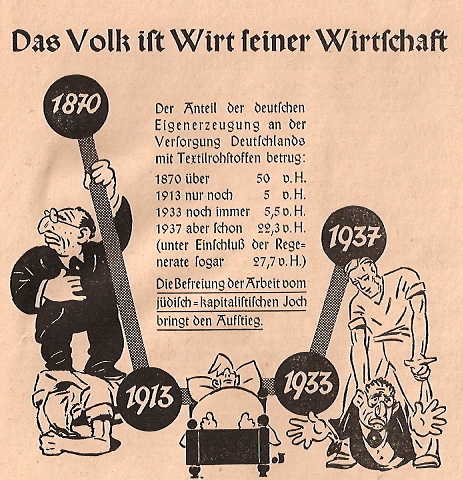
This chart is titled: “The people is master of its economy.”
The text states that in 1870, Germans produced 50% of cloth, but only 5% in 1913. In 1933, the figure was 5.5%, rising to 22.3% in 1937. “Freeing labor from the Jewish-capitalist yoke caused the increase.”
Source: Die wirtschaftspolitische Parole 3 (1938), #12.
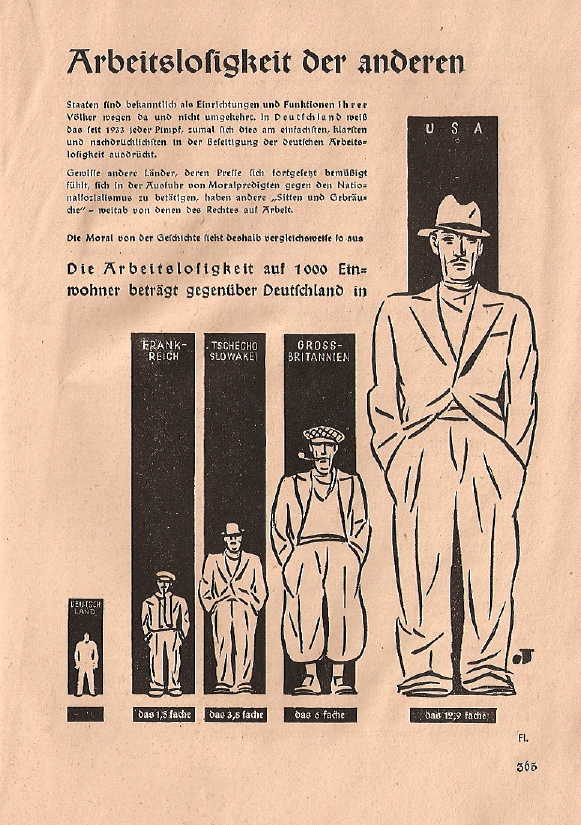
The chart title: “Unemployment among the others.”
The chart shows comparative unemployment rates in Germany, France, Czechoslovakia, Great Britain, and the USA.
Source: Die wirtschaftspolitische Parole 3 (1938), #12.

This is part of an anti-smoking campaign. It claims that expenditures on tobacco in Germany are sufficient to buy two million Volkswagens, or to purchase enough fuel to travel fifty billion kilometers.
Source: Die wirtschaftspolitische Parole 4 (1939), #1
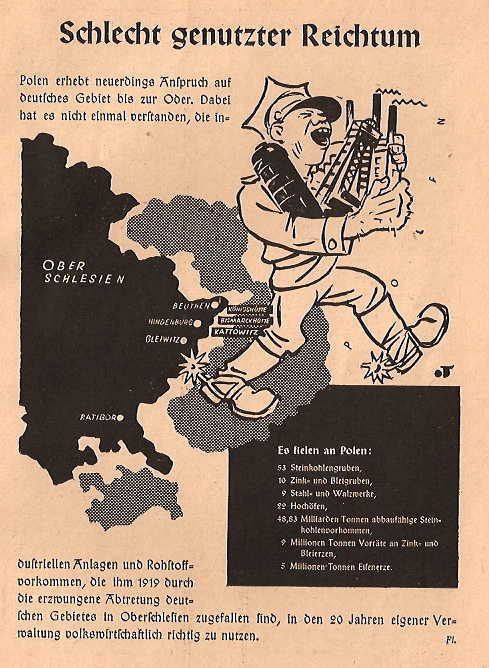
title: “Poorly used wealth”
The chart asserts that Poland has recently claimed German territory up to the Oder River. It lists formerly German areas and resources that were transferred to Poland after World War I (e.g., 53 coal mines, lead and zinc mines).
Source: Die wirtschaftspolitische Parole 4 (1939), #15.
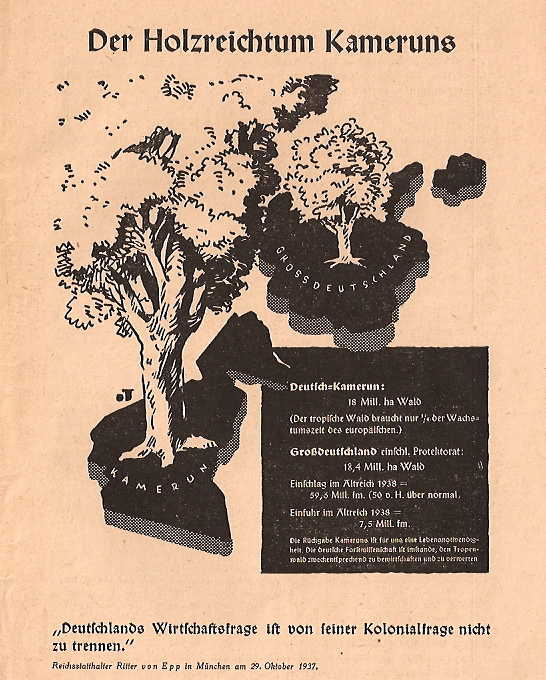
One of the Nazi demands was the return of German colonies lost after World War I. This one, titled “Wood resources of Cameroon,” claims that Cameroon alone has about as much timber as all of Germany. It has a quotation by Ritter von Epp at the bottom: “Germany’s economic question cannot be separated from its colonial question.”
Source: Die wirtschaftspolitische Parole 4 (1939), #16.
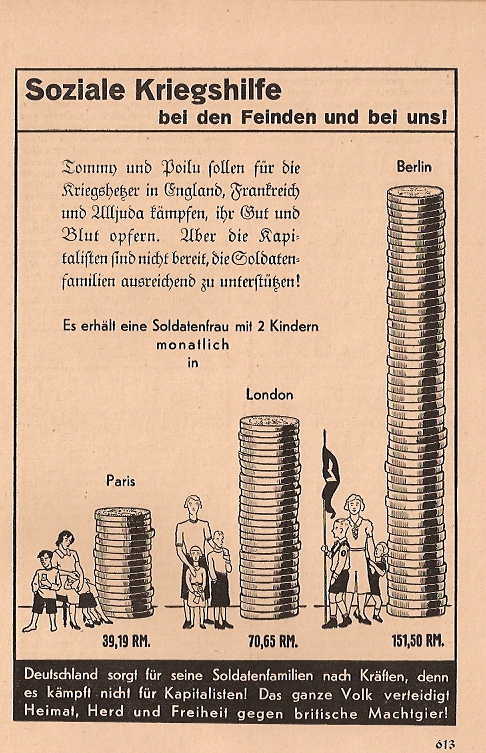
This issue, dated 20 December 1939, compares benefits for soldiers' wives in the warring countries, with the claim that German benefits are far better. “Tommy and Poilu are fighting for the warmongers in England, France, and Pan-Jewry, sacrificing their possessions and their blood. But the capitalists are not prepared to provide adequate support for the soldiers’ families!”
Source: Die wirtschaftspolitische Parole 4 (1939), #19.
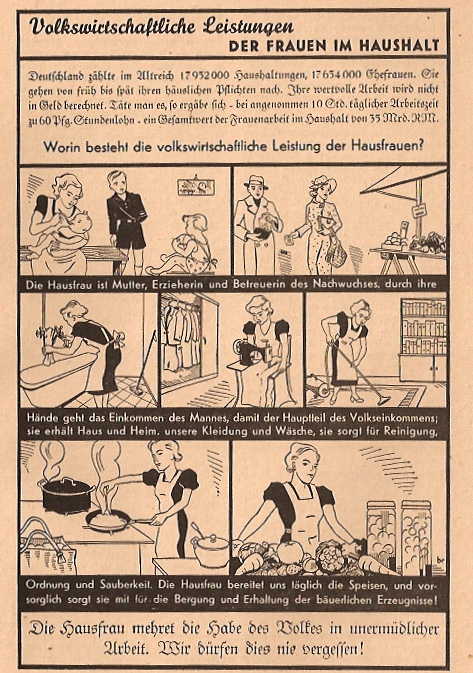
This chart shows the economic contributions made by housewives: “Germany has 17,952,000 households, and 17,654,000 housewives. They work from early to late on their household chores. The value of their work is not calculated in money. If one did so, assuming a ten-hour day at 60 pfennig per hour, the total value of their labor would be 35 billion Marks!”
The chart shows that the housewife is mother, teacher, household accountant, seamstress, house cleaner, cook. “The housewife increases the people's wealth through untiring labor. We may never forget this!”
Source: Die wirtschaftspolitische Parole 5 (1940), #1.
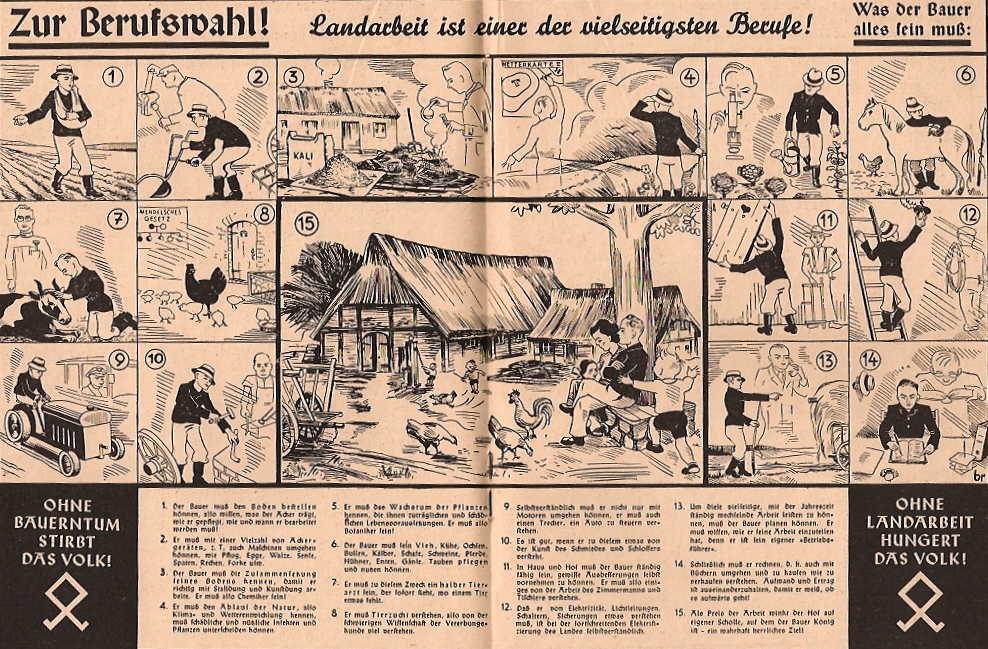
This two-page spread is on the importance of farming, and attempts to encourage people to become farmers. It shows the varied tasks a farmer performs. At the bottom: “Without the peasantry, the people dies!” and “Without agriculture, the people starves!”
Source: Die wirtschaftspolitische Parole 5 (1940), #1.


